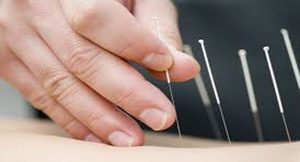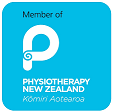
Many people have heard of the term but may not know much about it. In my clinical experience, some clients are even nervous about the thought of it too. The following information article is aimed to give you a basic overview of Acupuncture and dry needling.
What is acupuncture and dry needling?
Acupuncture was developed in China thousands of years ago and is a common treatment in Traditional Chinese Medicine. Western medicine has been researching acupuncture for many years now, in order to understand scientifically how and why it works.
Acupuncture treatment involves the insertion of very fine needles into specific points along the body – known as meridians. There is evidence that acupuncture can have a local effect on the tissues around the needle site, including increased blood flow and release of natural anti-inflammatory chemicals.
This is useful for the body to allow it to recover from injury. Acupuncture also has an effect on the pain system of your body. Research shows that during acupuncture, the brain releases more natural pain killers and feel good hormones such as endorphins. The treatment can also help to regulate the pain pathways to and from the brain. These effects on the pain system can therefore help to reduce pain. Finally, acupuncture can have a releasing effect on local muscles. This area of effect is where the concept of dry needling arose from.
Dry needling in simple terms is acupuncture not using specific meridian points. The needles are inserted into areas of tension and tightness in the body or into trigger points. The needles are gently manipulated to allow the muscle to relax and becomes less tight. Many Western acupuncturists will use a combination of both traditional points and dry needling points.
Why is it used in Physiotherapy?
Acupuncture is a specialist treatment that a Physiotherapist will undergo post-graduate training in order to carry out. Physiotherapists commonly use acupuncture in conjunction with a number of other treatments, such as exercise prescription, massage and manual therapy. A physiotherapist who has studied Western acupuncture will only use it as a treatment within the scope of practice of Physiotherapy; for example, to treat injuries to the musculo-skeletal system, to treat pain and improve muscular tightness. There is good evidence to support its’ use, however as with any treatment, it does not work for everyone and some individuals may be more suited to it than other.
What is involved?
Physiotherapists will complete an initial assessment first, to gauge if acupuncture is the most appropriate treatment option for the problem/injury. They will then discuss this with the client and if deemed appropriate will then book the patient in for their first treatment session.
A western acupuncture treatment will typically last 20-30 minutes, depending on the person, the injury and the situation. The needles are inserted into the desired areas using a plastic guide tube. The needles are commonly very fine, only 0.25mm, and therefore don’t often hurt to be inserted (even less than injections!). Depending on the point being used, some needles are then placed a little deeper, for example into the muscle. Some people can experience some mild aching, heat or sharper symptoms at this stage, but some people won’t feel anything at all. Your Physiotherapist will guide you through this part of the treatment. The needles are left to take effect and the client will often just lie and relax. At intervals during the treatment, the Physiotherapists may gently manipulate the needle to stimulate it’s effects.
Dry needling treatments are often much quicker. The needle may only be in the target muscle for 10 seconds. Given this, it is common for Physiotherapists to undertake dry needling as part of a number of other treatments in a session.
Needling at North City Physiotherapy?
At North City Physiotherapy we have several Physiotherapists who are trained in either acupuncture or dry needling. If you think it may be a treatment you’d like to consider or if you would like more information, don’t hesitate to contact us.











